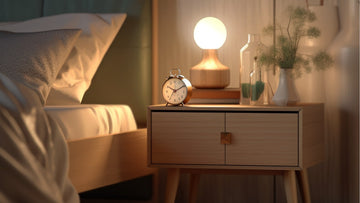Lighting plays a crucial role in the ambiance and functionality of any space. Properly sized and well-placed lighting can transform a room, enhancing its aesthetic appeal and ensuring practical use. Drawing inspiration from Studio McGee’s expertise, we’ve compiled a detailed guide to help you size and hang lighting in your home perfectly. Whether you're updating a single room or revamping your entire home, these tips will ensure your lighting is both stylish and functional.
Calgary Living Room Decor Ideas
The Importance of Proper Lighting
Proper lighting can significantly impact the look and feel of a room. It highlights architectural features, sets the mood, and provides essential illumination for various tasks. Understanding how to size and hang lighting appropriately is key to achieving a well-lit and inviting space.
Types of Lighting and Their Uses
Ambient Lighting
Ambient lighting provides general illumination for a room. It’s typically achieved through ceiling-mounted fixtures, chandeliers, or recessed lights. This type of lighting ensures the space is well-lit and serves as the foundation for layering other types of lighting.
Task Lighting
Task lighting is focused on specific areas where activities such as reading, cooking, or working take place. Examples include desk lamps, under-cabinet lighting, and pendant lights over kitchen islands.
Accent Lighting
Accent lighting highlights particular features or decor elements in a room, such as artwork, architectural details, or plants. Wall sconces, track lighting, and picture lights are commonly used for this purpose.

Calgary Home Decor Inspiration
Sizing Your Lighting Fixtures
Chandeliers and Pendant Lights
When sizing chandeliers and pendant lights, consider both the room size and the height at which the fixture will hang. A general rule of thumb is to add the room's length and width in feet and convert that sum to inches. This measurement gives you the ideal diameter of the fixture.
Example:
For a room that is 12 feet by 14 feet, the sum is 26 feet. Convert this to inches (26 inches), which is the ideal diameter for your chandelier or pendant light.
Ceiling Height Considerations
The height of your ceiling plays a significant role in determining the size and hanging height of your fixture. For standard 8-foot ceilings, a chandelier should hang about 30 to 34 inches above a table. For higher ceilings, add an additional 3 inches for each extra foot of ceiling height.
Wall Sconces
Wall sconces should be mounted approximately 60 inches from the floor to the center of the fixture. If placing sconces on either side of a mirror, ensure they are at eye level to avoid harsh shadows on the face.
Table and Floor Lamps
The height of table and floor lamps should be proportionate to the furniture they accompany. A table lamp’s bottom shade should be at eye level when seated. For floor lamps, the bottom of the shade should be around 60 inches from the floor.
Showhome Furniture Home Styling

Hanging Lighting Fixtures: Best Practices
Over Dining Tables
When hanging a chandelier or pendant light over a dining table, it should be centered on the table, not the room. The fixture should hang 30 to 34 inches above the table surface. Ensure the fixture’s width is about one-half to two-thirds the width of the table.
In Entryways
For entryway lighting, consider the overall space and the height of the ceiling. In a double-height entryway, the fixture should hang about 7 feet from the floor. In single-height spaces, allow for at least 7 feet of clearance from the bottom of the fixture to the floor.
In Kitchens
Pendant lights over kitchen islands should hang 30 to 36 inches above the countertop. Space multiple pendants evenly, ensuring they do not obstruct views or create unnecessary shadows on work surfaces.
In Bedrooms
Bedroom lighting should create a cozy and relaxing atmosphere. Hang chandeliers about 7 feet from the floor or position pendant lights 30 to 36 inches above nightstands for effective task lighting.

Choosing the Right Bulbs
Color Temperature
Bulbs come in various color temperatures, measured in Kelvins (K). Warm white (2700K-3000K) creates a cozy, inviting atmosphere, ideal for living rooms and bedrooms. Cool white (3500K-4100K) is perfect for kitchens and bathrooms, offering a clean and bright light. Daylight (5000K-6500K) is best for areas requiring strong illumination, such as garages or home offices.
Brightness
Brightness is measured in lumens. For general room lighting, aim for 20 lumens per square foot. Task areas like kitchen counters need around 50 lumens per square foot. Accent lighting should be around 30 lumens per square foot to effectively highlight features.
Energy Efficiency
Opt for LED bulbs for their energy efficiency and long lifespan. They come in various styles and colors, making them suitable for any fixture and decor style.
Incorporating Dimmers
Dimmers are an excellent addition to any lighting setup, allowing you to adjust the brightness to suit different activities and moods. They also help save energy and extend the life of your bulbs.
Conclusion:
Properly sizing and hanging lighting is essential for creating a well-lit, aesthetically pleasing, and functional home. By following these guidelines, you can ensure that each room in your home is beautifully illuminated and perfectly styled. Happy lighting!








